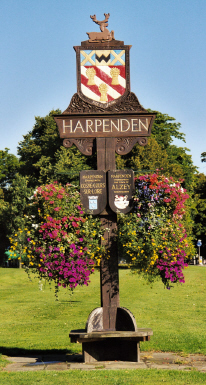Special Interest and Study Day report
-
Study Day October 24th 2017: Ethiopia, a Mysterious Land, with Louise Schofield
Louise arrived in a torrent of enthusiasm from her latest project in Ethiopia: uncovering an ancient gold mine, possibly the source of the golden treasures taken as gifts to Solomon by the Queen of Sheba (I Kings 10:2). She was Queen of the Kingdom of Saba (Sheba), based in Aksum in Ethiopia and extending across the Red Sea into what is now Yemen. One of Louise’s key finds linking these parts of the kingdom is a superb intact glass flask found in Ethiopia and probably a product of Damascus. The find was sufficient to procure continuing funding for her project, as western museums began to take an interest in her research.
Louise spends half the year in a tent in Ethiopia. Her stories are personal and authentic, straight from her experience of archaeological work over 10 years in the country. Her first project was in Tigray in the north of Ethiopia, where she found a native population completely unacquainted with western, white people, still living a Neolithic lifestyle and farming at a subsistence level. On her first encounter with a local woman, she was poked with a stick, to check whether she was a demon. In her second year there, by which time she was an accepted incomer, she involved 2,800 of the local people in her project. As well as sustaining the day-to-day necessities of life, they helped search for flint tools, indicative of primitive civilisations over 30.000 years old. Together they created a local museum of archaeological finds and even contemporary artefacts, establishing a stonemason training programme during the building process.
We saw many images of the famous rock-hewn churches of the area of Lalibela. Christianity is still the main religion of Ethiopia, though for a period after the birth and spread of Islam it had to be practiced in secret. This explains why the churches were dug out of the rock, some underground: it helped to keep them concealed from view. Many of the wall paintings depict battles fought against the Ottoman Turks. Today Christianity and other minority religions live harmoniously side by side. We discovered that St George and the Dragon was a favourite story of the early centuries, as in many Christian countries, and that in Ethiopian paintings the baddies are distinguished from the goodies by being shown side view with only one eye visible. Two eyes good, one eye bad …
These churches are still attended today and celebrate their named saints day with a 12-hour mass. The Chapel of Our Lady of Zion in Axum allegedly houses the original Ark of the Covenant. No-one is allowed to see it, and it is guarded by a priest who is locked up inescapably with it until he dies and is replaced by another priest. This may not be the most sought-after job in the kingdom.
Louise kept us enthralled with her stories, and question time revealed many more fascinating anecdotes and personal experiences of her time spent in Ethiopia, such as the night she found her tent surrounded by hungry hyenas …
Stephanie Reynard November 2017

